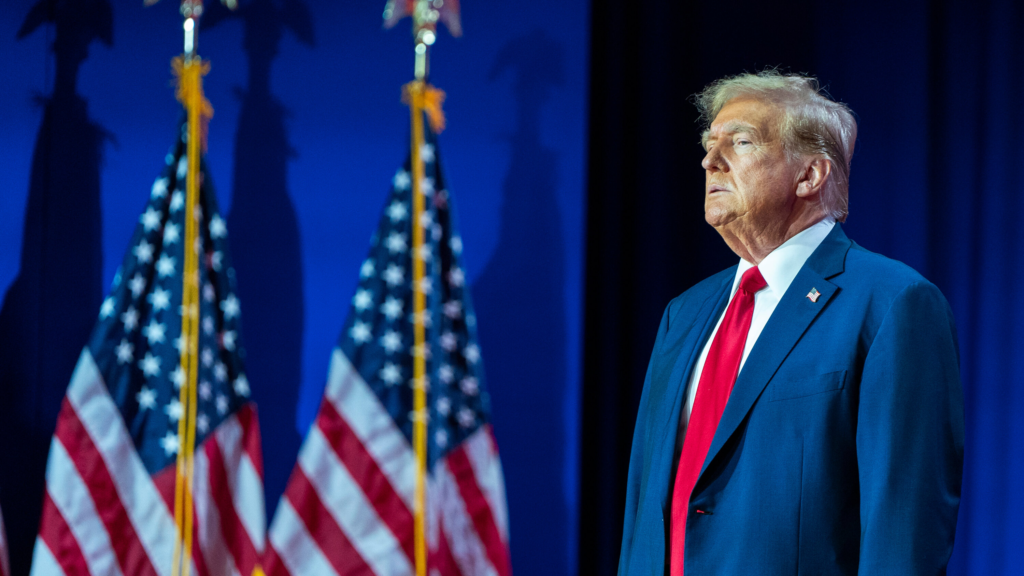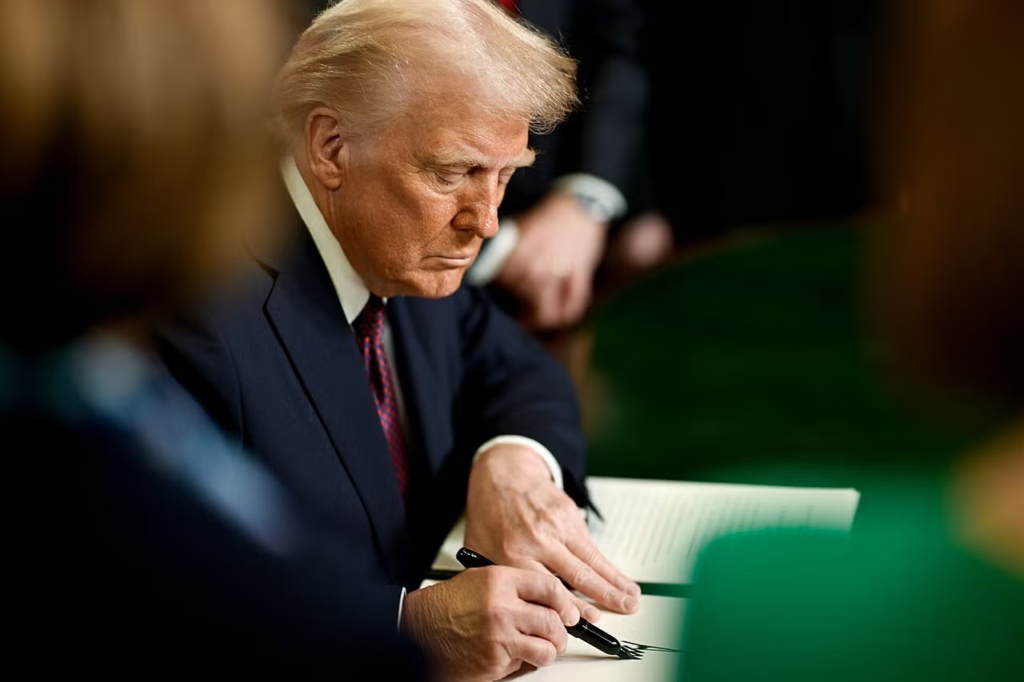Trump trade policy was one of the most defining features of his time in office. It focused on protecting American jobs and industries, reducing the trade deficit, and challenging what the administration saw as unfair trade practices by other countries. The strategy involved pulling out of multilateral agreements, renegotiating existing deals, and imposing tariffs on imports from major trading partners like China, India, and the European Union.
This article breaks down the core of Trump’s trade agenda, its major actions, and the economic impact it had on the U.S. and the world.
Goals of the Trump Trade Policy
The Trump administration promoted a shift from free trade toward economic nationalism. The core objectives were:
- Protect American manufacturers and workers
- Reduce reliance on imported goods
- Decrease the U.S. trade deficit
- Pressure other countries to open their markets to U.S. exports
- Use tariffs and other trade tools as leverage to negotiate better deals
This was a major shift away from traditional U.S. trade policy, which had emphasized global cooperation and multilateral agreements.

Tariffs as a Trade Weapon
Tariffs were the centerpiece of Trump’s trade strategy. The administration used them as both a shield and a sword—to protect U.S. industries and to force other nations to come to the negotiating table.
Tariffs on China
The most significant trade battle took place with China. In 2018, the U.S. imposed tariffs on more than $360 billion worth of Chinese goods, targeting everything from electronics to machinery. China responded with its own tariffs on $110 billion worth of U.S. goods, including soybeans, pork, and automobiles.
The U.S. argued that China had long engaged in unfair trade practices such as forced technology transfers, intellectual property theft, and heavy state subsidies. The goal was to push China to make reforms.
While a “Phase One” agreement was reached in January 2020, the broader conflict remained unresolved. Most tariffs stayed in place, and China did not fully meet its commitments under the deal, especially regarding increased purchases of U.S. goods.
Tariffs on India
India, once seen as a growing trade partner, also became a target. In 2019, the Trump administration removed India from the Generalized System of Preferences (GSP), which had allowed duty-free access for $6 billion worth of Indian exports.
The administration said India failed to provide the U.S. with fair and reasonable access to its markets. India responded by imposing retaliatory tariffs on key American exports such as almonds and apples. This move cooled what had been a warming trade relationship.
Tariffs on the European Union
Trump also imposed tariffs on steel and aluminum imports from the European Union, using a national security justification. The EU hit back with tariffs on American goods like motorcycles, jeans, and whiskey.
Another dispute involved subsidies for aircraft manufacturers. The U.S. and the EU accused each other of unfairly supporting Boeing and Airbus, leading to additional tariffs on products like wine, cheese, and olive oil.
Trade Tensions with Allies
Many of Trump’s trade policies caused friction not just with rivals, but also with long-standing allies.
Canada and Mexico
Trump called NAFTA “the worst trade deal ever made” and pushed for its renegotiation. The result was the United States-Mexico-Canada Agreement (USMCA), signed in 2020.
Key updates in the deal included:
- Stronger labor standards in Mexico
- More access for U.S. dairy farmers in Canada
- Updated rules for digital trade and auto manufacturing
Although USMCA modernized NAFTA and included some U.S. wins, the negotiation process was tense. Tariffs were temporarily placed on Canadian and Mexican steel and aluminum, creating diplomatic strain.
European Union
Relations with the EU remained difficult. In addition to tariffs, Trump often criticized European trade practices and threatened duties on auto imports. Despite several rounds of talks, no major agreement was reached during his term.
Economic Impact
The economic effects of Trump’s trade policy were mixed. While some industries gained protection, others suffered from rising costs and reduced export access due to retaliation.
Impact on U.S. Industries
Winners included steel and aluminum producers, who saw a decline in competition due to tariffs on imported metals. Some manufacturers gained from reduced imports of rival products.
Losers included:
- Farmers, who were hit hard by retaliatory tariffs from China and other countries. The U.S. government provided nearly $28 billion in aid to support the agriculture sector.
- Automakers, who faced increased costs due to tariffs on imported components.
- Retailers and consumers, who saw higher prices on many goods, from washing machines to electronics.
Overall Economic Impact
Despite the focus on reducing the trade deficit, the U.S. deficit actually increased, reaching record highs in some years. Other economic impacts included:
- Slower GDP growth
- Higher costs for businesses relying on global supply chains
- Delayed investment decisions due to trade uncertainty
- Increased volatility in financial markets
Estimates suggest the trade war reduced U.S. GDP by about 0.3% in certain years and may have cost hundreds of thousands of jobs in affected sectors.
Global Economic Effects
- China’s economy slowed, and global supply chains were disrupted
- Many countries sought new markets or adjusted sourcing strategies
- Global trade became more fragmented, and uncertainty increased
Trade Agreements and Outcomes
Despite the confrontational tone, the Trump administration did achieve some trade deals.
USMCA
The updated NAFTA deal was one of Trump’s key achievements. It included provisions for stronger labor rights, especially in Mexico, and modern rules for digital trade and intellectual property.
Phase One Deal with China
This agreement committed China to:
- Increase purchases of U.S. goods
- Improve protection of intellectual property
- End forced technology transfers
However, enforcement was weak, and many of the key issues remained unresolved.
Bilateral Deals
- Japan agreed to open its agricultural market to more U.S. exports and improve digital trade rules.
- South Korea revised its trade agreement with the U.S., especially concerning steel exports and car imports.

Legacy of Trump’s Trade Policy
Trump’s trade approach represented a clear break from past policies and reshaped global trade discussions. Some positive outcomes include:
- Greater focus on protecting American industries
- Increased awareness of China’s trade practices
- Moves toward reshoring manufacturing jobs
However, the negative consequences were also significant:
- Strained relationships with key allies
- Higher costs for consumers and businesses
- No major reduction in the trade deficit
While President Biden has maintained many of Trump’s tariffs, he has moved toward repairing alliances and seeking multilateral solutions to trade challenges.
Conclusion
Trump trade policy redefined the way the U.S. engages with the global economy. Through tariffs, tough negotiations, and a focus on bilateral deals, the administration sought to protect American interests. While it succeeded in bringing attention to long-standing issues and made some progress on trade agreements, the overall economic impact was mixed. The full legacy of these policies will continue to influence trade strategies for years to come.
Do Follow USA Glory On Instagram
Read Next – Political Violence United States: The Killing of Charlie Kirk






